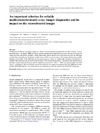Identificador persistente para citar o vincular este elemento:
https://accedacris.ulpgc.es/jspui/handle/10553/47988
| Título: | An important criterion for reliable multi-monochromatic X-ray imager diagnostics and its impact on the reconstructed images | Autores/as: | Nagayama, T. Mancini, R. C. Mayes, D. Tommasini, R. Florido, R. |
Clasificación UNESCO: | 2207 Física atómica y nuclear | Palabras clave: | High power laser Inertial confinement fusion Monochromatic imager X-ray diagnostics |
Fecha de publicación: | 2015 | Publicación seriada: | High Power Laser Science and Engineering | Resumen: | Temperature and density asymmetry diagnosis is critical to advance inertial confinement fusion (ICF) science. A multi-monochromatic x-ray imager, MMI, records the spectral signature from an ICF implosion core with time resolution, 2D spatial resolution and spectral resolution. While narrow-band images and 2D space-resolved spectra from the MMI data constrain the temperature and the density spatial structure of the core, the accuracy of the images and the spectra highly depends on the quality of the MMI data and the processing tools. Here, we synthetically investigate the criterion for reliable MMI diagnostics and its effects on the accuracy of the reconstructed images. The pinhole array tilt determines the object spatial sampling efficiency and the minimum reconstruction width, . When the spectral width associated with is significantly narrower than the spectral linewidth, the line images reconstructed from the MMI data become reliable. The MMI setup has to be optimized for every application to meet this criterion for reliable ICF diagnostics. | URI: | https://accedacris.ulpgc.es/handle/10553/47988 | ISSN: | 2095-4719 | DOI: | 10.1017/hpl.2015.25 | Fuente: | High Power Laser Science and Engineering [ISSN 2095-4719], v. 3 (e23) |
| Colección: | Artículos |
Citas SCOPUSTM
6
actualizado el 08-jun-2025
Citas de WEB OF SCIENCETM
Citations
6
actualizado el 08-jun-2025
Visitas
63
actualizado el 09-mar-2024
Descargas
79
actualizado el 09-mar-2024
Google ScholarTM
Verifica
Altmetric
Comparte
Exporta metadatos
Los elementos en ULPGC accedaCRIS están protegidos por derechos de autor con todos los derechos reservados, a menos que se indique lo contrario.
